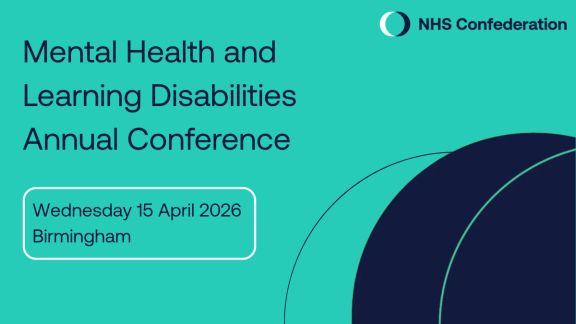Pay for redundancies or risk waiting times rising, NHS Confederation and NHS Providers warn

The NHS will have to cut frontline staff and carry out fewer tests, appointments and operations if the government doesn’t take urgent action to fill a widening gap that could be up to £3 billion in NHS funding, health leaders have warned.
A series of unexpected cost pressures are threatening to derail key planks of the government’s reform agenda as well as slowing down progress against key waiting time targets, despite the NHS delivering more procedures and presiding over record productivity improvements this year.
The three main unplanned cost pressures that were not included in the NHS’ budget for 2025/26 are:
- Redundancy costs: over £1 billion is needed this year to enable integrated care boards (ICB) to reduce their running costs by 50 per cent and for NHS trusts to deliver reductions in their corporate costs. Both were demanded by the government in March after the NHS budget was set. The government’s refusal to provide the up-front extra costs to pay for these job cuts means NHS leaders cannot cut back as planned and release efficiencies as quickly as they need to, or they will need to make deeper cuts than already planned this year which will undoubtedly have a significant impact on patient care.
- Strike action: the recent industrial action by resident doctors has led to further unplanned cost pressures which the Department of Health and Social Care (DHSC) estimates to be £300 million so far. With the British Medical Association (BMA) announcing further resident doctor strikes in November there is likely to be a further additional financial impact this financial year.
- Higher drug prices: the NHS is under pressure to absorb the cost of higher medicines prices as a result of the US government’s attempts to influence the threshold that NICE sets for a medicine to be regarded as cost effective for use in the health service. Earlier this summer, the government rejected the pharmaceutical industry’s demands to increase drug prices by approximately £2.5bn a year. But we understand an agreement is now close and some of these costs could land this financial year.
Taken together, estimates suggest this would generate a cost pressure of up to £3bn that the NHS may be expected to absorb this financial year.
In a joint intervention ahead of the Chancellor’s Budget in November, the NHS Confederation and NHS Providers are calling on the Chancellor to cover these costs or risk the NHS having to cut staff and services to make up the shortfall.
Members of both organisations are warning that progress against key waiting time standards, such as hitting the 18-week target for planned care, will be jeopardised if this is not resolved.
The knock-on impact will mean more patients continuing to wait longer for care, many of whom may no longer be able to work without the treatment they need, reducing revenues from taxation and increasing costs from out of work benefit.
One NHS trust chief executive said that reducing expenditure would undermine the ability of services to cut waiting lists – such as running weekend theatres or adding additional operating lists to boost productivity.
They added: "These are the easiest thing to stop when money is difficult, but they have an immediate impact on waiting times.
"The other impact is trusts and ICBs being much stricter on what the NHS will and won’t do – so reviewing procedures for clinical effectiveness and not doing things which we once did. This is affecting procedures which impact quality of life but aren’t life-saving."
There is also a worry that minimum waiting times for treatments could be increased, which could further delay patients accessing care.
One ICB chief executive said that the December target of implementing the redundancies was now looking "unrealistic".
They added: "We need to move quickly to confirm a change programme that is realistic within the available resource and provides clarity to staff.
"Distraction and lack of focus at a time of uncertainty remains a significant delivery risk for the second half of 2025/26."
Another ICB chief executive said that they were concerned about the lack of clarity on how to fund redundancy costs as well as the "level of psychological harm being caused to workforce who have been left unclear about how the change requested in March is to be delivered given absence of funding for redundancy costs".
Delays to making these savings could also mean the NHS as a whole begins the next financial year in a worse financial position than planned, which could result in in further delays to vital improvement and reform plans well into 2026/2027.
Matthew Taylor, chief executive of the NHS Confederation, said:
"NHS leaders are playing their part by delivering record levels of activity and the highest productivity improvements seen in years. They want to crack on with delivering the government’s NHS reform agenda, but they have one hand tied behind their backs by not having access to the up-front money they need to make redundancies that will save the taxpayer money down the line.
"The threat from un-budgeted redundancy payments, higher drug prices and renewed industrial action risks derailing progress on key waiting time targets and the wider reforms that are essential to getting the NHS back on track."
Daniel Elkeles, chief executive of NHS Providers, said:
"The NHS is being left with a stark choice. Either balance the books or cut waiting lists and face more deficits which threaten services.
"This isn't where we want to be. NHS trusts are doing all they can to make big savings and to boost productivity. That includes making tough decisions to shed some staff while protecting services for patients. But redundancies cost money, making it harder to make long-term savings without government support. As the government prepares its Budget it's time for an honest assessment and discussion about what the NHS can really achieve this year in these challenging financial circumstances - and about what is 'doable'' to meet ministers' ambitions in their 10-year plan for health."
Note to editors
- The government announced in March that NHS England would be merged into the Department of Health and Social Care, while integrated care boards (ICB) were ordered to cut their running costs and trusts tasked to cut their corporate costs.
- NHS England estimates acute trusts increased activity by 5.8 per cent in 2024 to 2025 compared to the previous year, while at the same time growing their costs by 3 per cent. This suggests productivity grew by 2.7 per cent year-on-year.
- ICB leaders have informally shared their cost estimates with us. With a conservative average cost across the country being £35 million per ICB. Accounting for ICBs merging from April 2026, the estimate would be in the region of £1-1.2 billion.
- The NHS Confederation has previously called for a national pot to fund these ICB redundancies.
- The government has set the NHS the target of 65 per cent of patients waiting no longer than 18 weeks by March 2026, with a return to the 92 per cent constitutional standard by March 2029.
About us
We are the membership organisation that brings together, supports and speaks for the whole healthcare system in England, Wales and Northern Ireland. The members we represent employ 1.5 million staff, care for more than 1 million patients a day and control £150 billion of public expenditure. We promote collaboration and partnership working as the key to improving population health, delivering high-quality care and reducing health inequalities.



